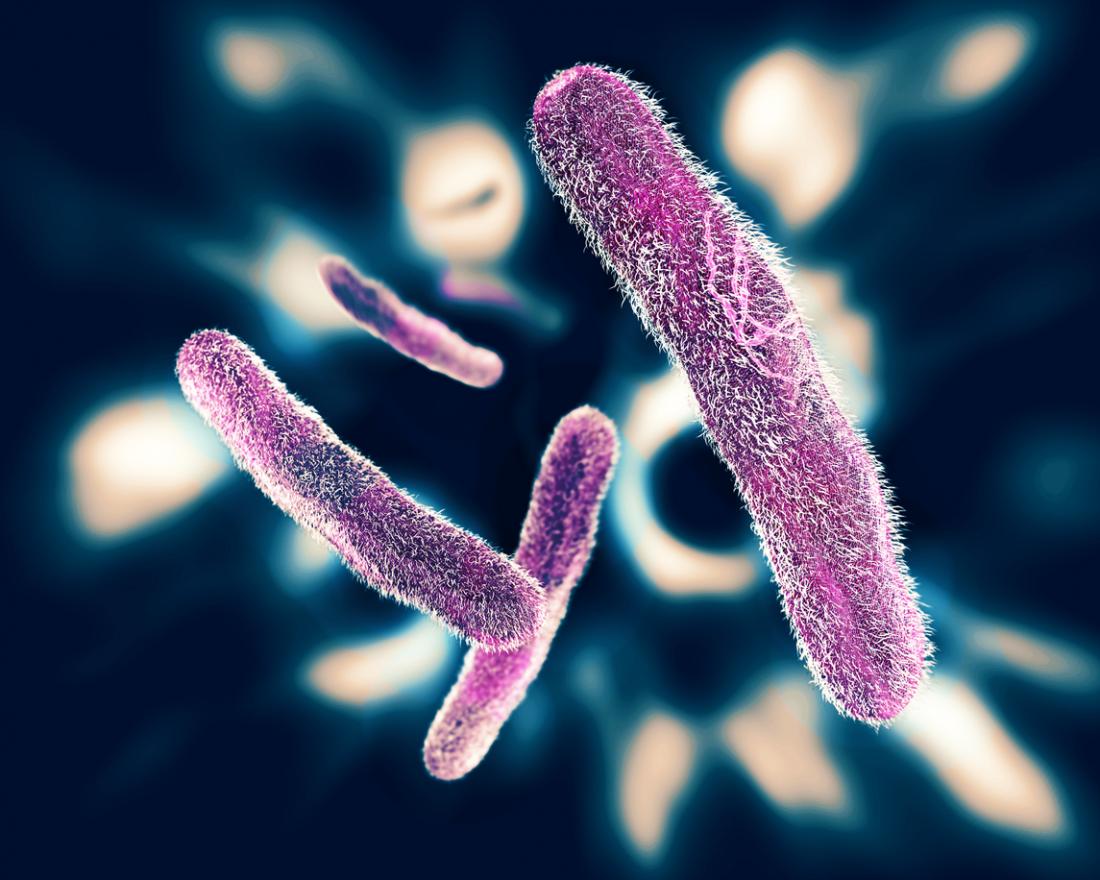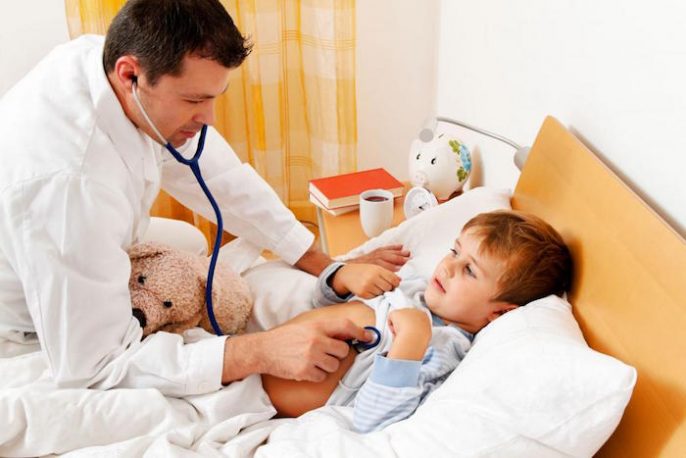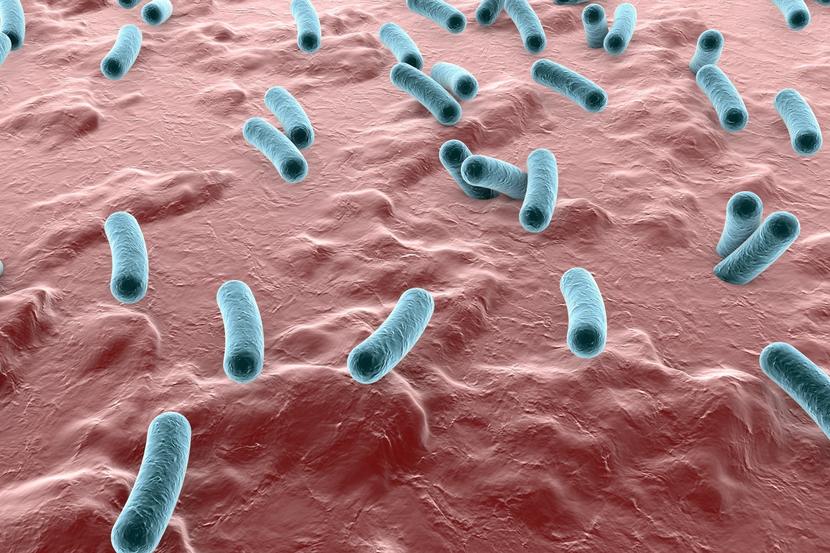Dysentery is an infectious disease that is related to severe diarrhea (bloody diarrhea). It can be caused by different types of infections (virus, bacteria, protozoa and parasitic worms) but Shigella bacillus or bacterium is the most common cause. It is an intestinal inflammatory disorder (gastroenteritis), usually of colon.
Apart from diarrhea, the symptoms of this disease are fever, abdominal pain and cramps, nausea, mucus or blood in feces, and feeling of incomplete defecation (rectal tenesmus). They typically last for 3-7 days. It can even turn fatal in case of inadequate hydration.
It mostly spreads as a result of poor hygiene. It can usually occur from feces-contaminated water (waterborne disease) and food. By maintaining proper hygiene habits such as handwashing and proper sanitation can help in preventing dysentery.
Here are the types, causes, signs and symptoms, causes and risk factors, complications, diagnosis and treatment of dysentery.
Types of Dysentery

The people experiencing dysentery either develop amoebic dysentery and bacterial dysentery.
- Bacterial Dysentery or Bacillary Dysentery
This type of dysentery is a result of infection with bacteria from Salmonella, Shigella, Campylobacter, or enterohemorrhagic E. coli. The diarrhea from Shigella is also called shigellosis. Shigellosis happens to be the most common type of dysentery.
- Amoebic Dysentery
Also known as amoebiasis, amoebic dysentery is caused by a single-celled parasite infecting the intestines. This type of dysentery is a rare occurrence in the developed world and is mostly found in the tropical locales with poor sanitation. A person can also become infected if he or she traveled to a country where it is an endemic.
Causes & Risk Factors

Shigellosis and amoebic dysentery usually results from bad sanitary conditions. This refers to the environments or conditions where people without dysentery come into contact with fecal matter from people with dysentery.
This contact may happen through contaminated food, water, other drinks, physical contact, poor hand washing by infected people, swimming in polluted water sources like lakes or pools.
The children are at a higher risk of shigellosis but it can occur at any age. It can easily spread from person to person and through contaminated food and water. It usually spreads from close contact with an infected person at home, in schools, in day care centers and in nursing homes.
Amoebic dysentery is mostly spread by eating contaminated food or drinking polluted water in tropical areas with poor sanitation.
Signs & Symptoms

The signs and symptoms of dysentery can be mild to severe and depend mainly on the quality of sanitation in the areas where infection has spread. In the developed countries, the signs and symptoms are milder as compared to the developing nations or tropical areas.
The mild symptoms of the illness are cramping, diarrhea and a slight stomach ache. They typically appear after 1-3 days of the infection and the patient recovers within a week.
Some people even develop lactose intolerance that can last for a long time, sometimes even years.
In both bacterial and amoebic dysentery, the symptoms like high fever, nausea, vomiting, and abdominal pain occur. Diarrhea (without blood or mucus) is frequent in bacterial dysentery and watery diarrhea (containing blood, mucus or pus) occurs in case of amoebic dysentery.
Symptoms tend to appear within 1 to 3 days of infection. There is normally a mild stomach ache and diarrhea, but no blood or mucus in the feces. Diarrhea may be frequent to start with. The less common symptom in bacterial dysentery is blood or mucus in the feces.
And in case of amoebic dysentery, a patient may experience painful stools, fatigue and intermittent constipation. If the amoeba tunnels through the intestinal wall, they can reach the bloodstream and infect other organs. Ulcers and bloody stools may also develop. Its symptoms may last for many weeks and the amoebae may continue to live in the human host even after the symptoms are gone. The symptoms may keep coming back when the person's immune system becomes weaker.
Complications
Not many complications occur in dysentery but they can be severe including:
-
Bloodstream infections are rare and mostly affect immunocompromised people such as those who have HIV or cancer.
-
Generalized seizures may sometimes occur in young children for unknown reason. It usually happens after infection and resolves without any treatment.
-
Postinfectious arthritis affects nearly 2% people who get a particular strain of Shigella bacteria named S. flexneri. The affected people may experience eye irritation, joint pain, and painful urination. The condition may persist for months or years.
-
Hemolytic uremic syndrome (HUS) is sometimes caused by a Shigella bacteria type called S. dysenteriae when a toxin that destroys red blood cells (RBCs) is formed. The RBCc may block the entrance to the kidneys thereby resulting in low platelet count, kidney failure and kidney anemia.
-
Liver abscess can take place in rare cases when the amoebae spread to the liver. Also, the parasites may spread to lungs or brain.
-
Dehydration (as a result of frequent diarrhea and vomiting), if not treated, can quickly become life-threatening in young children and infants.
Diagnosis

Your doctor will enquire about the signs and symptoms and any recent travels. This will help in understanding the plausible causes of dysentery. If you or your child shows dysentery symptoms, he or she may suggest or conduct the physical examination.
Diarrhea can occur due to several reasons. In case of severe symptoms or when you don’t have any other symptoms, the doctor may recommend diagnostic imaging like endoscopy or ultrasound scan to know which bacteria is present. A blood test or stool test may also be performed especially if a patient traveled back from tropical areas. Additional testing may also be required to check if antibiotic will help.
Treatment

Whether or not treatment is required will depend on the results of diagnostic tests. However, in any case, any patient who has diarrhea and vomiting should a lot of water in order to prevent dehydration. But if the patient experiences inability to drink or if there’s excessive vomiting or severe diarrhea, intravenous (IV) fluid replacement is essential. He or she will be put on a drip and kept under observation.
The lab test results will tell whether the infection is because of Shigella or Entamoeba histolytica.
In case of mild shigellosis or bacterial dysentery, good sanitation conditions and drinking plenty of liquids are a must to resolve the situation without any treatment. Over-the-counter medication like bismuth subsalicylate (Pepto-Bismol) can help in relieving cramps and diarrhea. Also, avoid drugs which slow down the intestines like loperamide (Imodium) or atropine-diphenoxylate (Lomotil) as they can worsen the condition.
For severe shigellosis, antibiotics treatment may be recommended but the bacteria that causes it are often resistant. If the prescribed antibiotic doesn’t show any improvement in the condition, inform the doctor about it. Your strain of Shigella bacteria may be resistant and the doctor might have to adjust your treatment plan.
As for amoebic dysentery, the drugs called metronidazole (Flagyl) or tinidazole (Tindamax) can treat parasites (as well as bacteria). In certain cases, a follow-up drug is given to ensure that all the parasites have been killed. Amoebicidal medications are used for treating Entamoeba histolytica. These meds ensure that the amoeba doesn’t survive inside the body after the symptoms have been resolved.
If the lab results are not clear, the patient may be suggested a combination of antibiotic and amoebicidal medications based on the severity of the symptoms.
Preventions

Dysentery usually results from poor hygiene. In order to reduce the infection risk, people should follow these preventive measures when you visit a place where the disease is widespread or otherwise:
- Wash hands regularly using soap and water particularly before & after using bathroom and food preparation.
- Drinking water only from reliable sources such as bottles and cans that are well-sealed
- Ensuring that food is cooked in good conditions
- Cleaning the top of rim after opening the bottle and before drinking from it
- Avoiding ice cubes as its water source may be unknown
- Using purified water for cleaning the teeth
- Being careful while changing a baby’s diaper.
- Preventing yourself from swallowing water while swimming
- Avoid unpasteurized milk, cheese or dairy products
- Drinking tap water which is boiled for at least 1 minute or filtered through a 1-micron filter with chlorine or iodine tablets added
- Eating washed and peeled fruit or vegetables
Image Source:
1) gethealthycarsoncity
2) medicalnewstoday
3) medicalnewstoday
4) elblogdelasalud
5) cloudfront
6) mmabuildingservices

